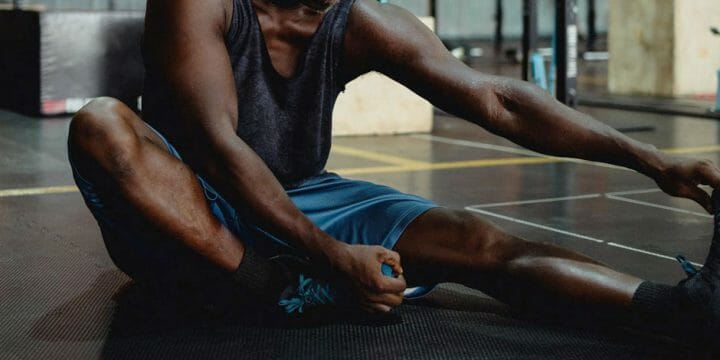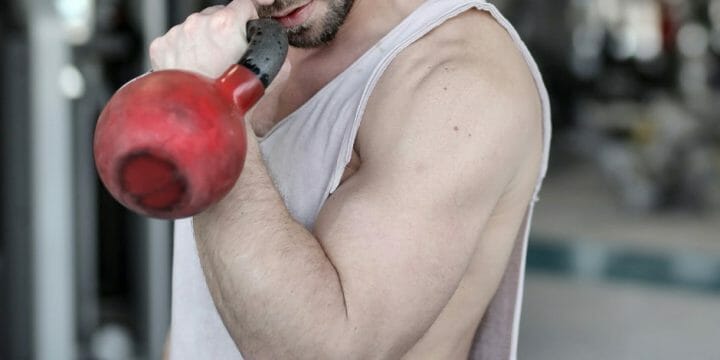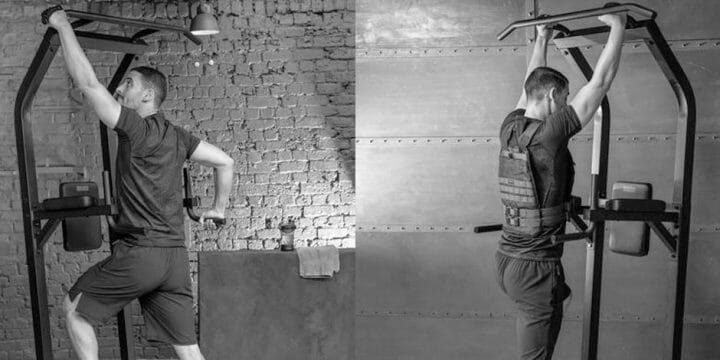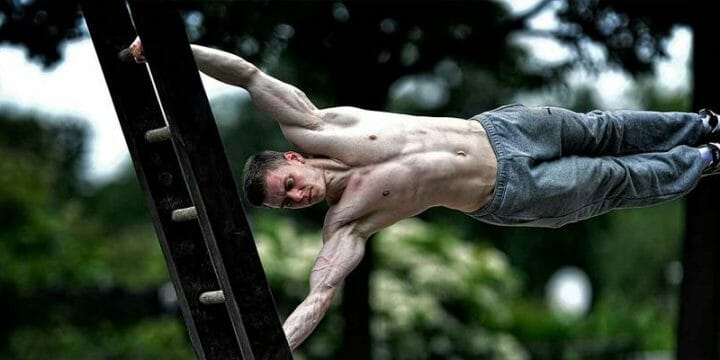As a personal trainer, I always recommend calisthenics as one of the go-to training methods for achieving strong and toned abs.
The significance of calisthenics lies in its multifaceted approach, which encompasses a wide range of bodyweight exercises that efficiently engage the core muscles.
In this post, I will share a selection of highly effective calisthenic ab workouts and offer tips to help you maximize the effectiveness of your training while avoiding potential pitfalls that may hinder your progress.
Quick Summary
- The best calisthenics ab exercises include side planks, hanging leg raises, V-snaps, reverse crunches, sit-ups, bird dog poses, ab wheel rollouts, and hollow body holds.
- Calisthenics ab exercises can improve core strength, posture, balance, and spine health and reduce your risk of back injury.
- A ResearchGate study reveals that calisthenics exercises effectively enhance posture, strength, and body composition, significantly reducing fat mass without requiring sophisticated gym equipment.
- In my opinion, calisthenics ab workouts are an excellent choice for those seeking a versatile, equipment-free method to strengthen and define their abdominal muscles.
The Best Calisthenics Ab Workout

As a trainer, I always advise my clients to incorporate each workout into their schedule at least once a week.
This can be done either by extending their regular training sessions or by treating it as a separate, stand-alone routine.
I typically recommend completing two sets of each exercise to ensure they're getting the most out of their workout.
1. Side plank
Side planks is a great exercise for the obliques as they target your external and internal obliques, the two pairs of muscles on the sides of your core responsible for your rotational movements, protecting your spine, and bending from side to side.
To perform a side plank:
- Lie on your side on the floor while keeping your legs extended.
- Put your elbow underneath your armpits. Your upper arms should be pointed straight down into the ground.
- Squeeze your glutes and engage your core muscles by lifting your hips. Squeeze your glutes and engage your core muscles by lifting your hips. Your body should maintain a straight line from your ankles to your shoulders.
- Hold this position for 20 seconds and repeat the same steps on the other side.
2. Hanging Leg Raise
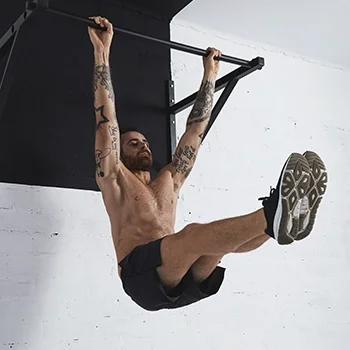
The hanging leg raise is an exercise suitable for individuals at an advanced level that targets the rectus abdominus and the obliques.
How to do this exercise:
- Stand beneath a pull-up bar and reach up to hold it with an overhand grip, slightly wider than shoulder length.
- Bring your feet together and flex your core.
- Slowly raise your legs in front of you as high as possible while keeping them straight.
- Hold the top position for three seconds.
- Slowly bring your legs back down to return to the starting position.
- Continue performing the exercise for the desired number of repetitions.
3. V-Snaps
V-snaps target the external and internal obliques and the rectus abdominus (commonly called the six-pack abs).
To do this exercise:
- Lie flat on the ground with your arm straight by your side and your legs together.
- Squeeze your abdominal muscles and use your core strength to lift your torso and legs off the floor. Your body should form a V-shape, and pointing your toes should help keep your legs straight.
- Hold this position for thirty seconds.
“When you lift, your arms should stay parallel to the ground as they were at your sides. You should not point your fingers to your toes, rather your arms should stay parallel to the floor as you lift.”
- Elizabeth Quinn, Exercise Physiologist
4. Reverse Crunches
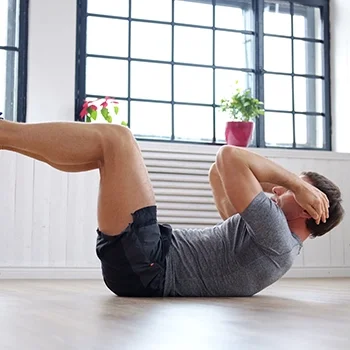
Performing reverse crunches primarily works to target the lower abs.
How to do this exercise:
- Lie on your back on the floor. Keep your legs extended in front of you, your toes pointed at the ceiling, and your arms stretched out alongside your body.
- Bend your knees and lift your legs until your calves are parallel to the ground, forming a 90-degree angle with your thighs.
- Engage your core muscles and slowly pull your knees as close as possible to your face while keeping your hips on the ground.
- Raise your knees toward the ceiling and lift your hips and lower back off the floor.
- Pause briefly and slowly lower your hips back to the starting position, using a smooth, controlled motion throughout the movement.
- Repeat the exercise for 15 reps.
5. Sit-Ups
This exercise hits multiple muscle groups, including the transverse abdominus, rectus abdominus, and obliques.
How to perform this exercise:
- Lay on the floor with your knees bent and feet firmly placed on the floor about hip-width apart to stabilize your lower body.
- Place your hands behind your head. Avoid pulling on your neck throughout this exercise.
- Exhale as you lift your upper body to your knees.
- Slowly enhale as you return to the starting position once you reach the top.
- Repeat the movement until all fifteen repetitions are completed.
6. Bird Dog Pose
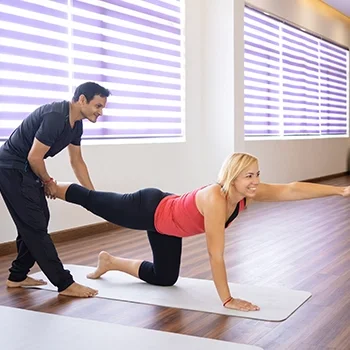
This is a classic calisthenic exercise that targets the rectus abdominus.
To do this exercise:
- Get in a quadruped position with your hands under your shoulders and your knees under your hips.
- Extend your right leg behind you and point your toe toward the floor.
- Reach your left arm out in front of you simultaneously as you raise your right while keeping your body aligned.
- Hold for a few breaths before returning to the starting position.
- Switch sides and repeat for fifteen reps.
“Test your stability by placing a paper cup that’s empty or full of water on your pelvis. Try to keep the cup from falling or spilling. If it falls or spills, engage your lower abs to stabilize your body. You can also place a light bar or foam roller across your shoulders to make sure they’re parallel to the floor.”
- Emily Cronkleton, Certified Yoga Teacher
7. Ab Wheel Rollout
This exercise allows you to target the rectus abdominis and the transverse abdominus, which help achieve the highly desired “six-pack abs.”
How to perform this exercise:
- Kneel in front of your ab wheel and place your hands on the handles.
- Position your shoulders above the wheel while keeping your back flat.
- Engage your core muscles and lift your feet off the ground.
- Let the ab wheel roll in front of you, bringing your hands in front of your shoulders.
- Pull the ab wheel to the starting position by pressing your arms and shoulders down into the floor.
8. Hollow Body Holds
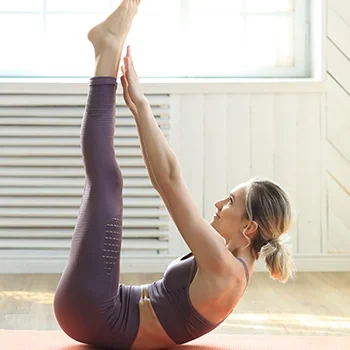
The hollow body hold is an isometric exercise that engages the transverse abdominus and rectus abdominis.
How to do this exercise:
- Lay on your back on the floor.
- Lift your knees at slightly more than a 90-degree angle.
- Extend your hands over your shoulders so they’re pointing at the ceiling.
- Lift your head off the floor.
- Hold this position for thirty seconds while squeezing your core muscles.
“Don’t fall into the trap of tucking your chin to your chest. Not only does this take the neck out of neutral alignment and increase the risk of neck strain, but it also reduces the tension on your core muscles.”
- Sara Lindberg, Health & Fitness Coach
What Are the Benefits of Calisthenics Exercises?

In my experience as a personal trainer, I've seen firsthand how my clients benefit from calisthenic exercises. They've improved their balance, strength, and posture significantly.
Additionally, many have reported better spine health and digestion. Most importantly, I've noticed a reduced risk of injuries among those who regularly incorporate calisthenics into their fitness routine.
Let's look at these benefits:
- Improves your balance - Research from the National Institute of Health (NIH) has found that calisthenics exercises can enhance coordination to a greater extent than Pilates [1].
- Improves posture and strength - Engaging in calisthenics exercises is proven in a study published on ResearchGate to improve posture and strength and has a notable impact on body composition, significantly reducing fat mass without using fancy gym equipment [2].
- Supports spine health and reduces back pain - A strong core may help mitigate or potentially eradicate back pain by stabilizing the spine and promoting proper alignment.
- Improves overall functional fitness - Incorporating calisthenics exercises into your routine can help you easily perform everyday tasks.
- Enhances your physical appearance - Calisthenic exercises offer more than just improved strength and endurance; they can also sculpt your muscles, resulting in a well-defined physical appearance.
“Because you’re not lifting heavy weights, there is a reduction in risk of injury. You’re designed to be able to move yourself in different ways, meaning calisthenics is easier on your tendons, joints, and muscles.”
- Alex Stronach, Fitness Editor
Tips for Maximizing Your Calisthenics Ab Workout Results

To get the most out of your calisthenics ab workouts:
1. Include various types of exercises
Include different types of core exercises to target your abdominal muscles efficiently.
It is crucial to prioritize anti-extension exercises, which involve maintaining a flat or neutral spine. This helps reduce the risk of injury.
Examples of anti-extension exercises include the following:
- Ab wheel rollout
- Side plank
- Dead bug
Additionally, incorporate anti-rotation exercises, such as side planks and bird dogs, to strengthen your external oblique muscles. You should also add anti-lateral flexion exercises, such as the single-arm farmer’s carry, which enhance lateral body stability.
2. Vary Your Workouts
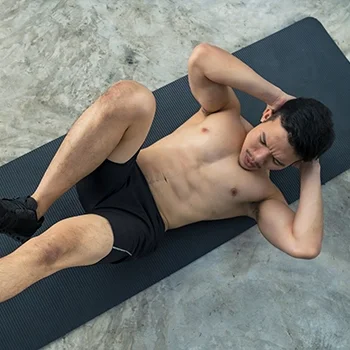
Avoid doing the same core exercises repeatedly, as this can eventually lead to a plateau where your body no longer experiences the benefits of your workout routine.
To avoid this, keep challenging yourself by exploring new exercises or using progressive overload techniques (adding reps and sets to your current exercises).
3. Include Cardio Sessions
While focusing on targeted ab exercises is certainly important, don't neglect cardiovascular exercises.
Adding one to two weekly cardio sessions can significantly aid in shedding unwanted fat layers, revealing your toned abs.
4. Maintain a Calorie Deficit
It’s essential to maintain a calorie deficit to achieve visible abs.
No matter how much you exercise, if you're consuming more calories than you're burning, you won't be able to achieve the results you're hoping for.
5. Increase Your Protein Intake

Make sure your body is fueled with the proper nutrients to support muscle growth.
Foods such as turkey, beef, fish, eggs, and protein shakes, are all great options for getting the protein your body needs.
6. Establish a Good Muscle-Mind Connection
By focusing your mental energy on the specific muscle you want to work on, whether it's your upper or lower abs, you can help activate it more effectively.
While it's easier to feel the upper abs contracting during exercises like crunches, the lower abs and obliques may require more attention and practice.
7. Focus on Quality of Movement
When it comes to your calisthenics ab workout, simply pumping out endless repetitions with a sky-high training volume won't necessarily yield the best results. Instead, focus on perfecting your form first and perform the exercises in a slow, controlled manner.
8. Optimize Your Posture
Proper posture is crucial when it comes to performing calisthenics workouts.
Not only does it help activate your core, but it can also prevent injuries that may occur as a result of improper form.
Integration with Other Workout Regimens
Calisthenics ab workouts can be seamlessly integrated into a well-rounded fitness routine by complementing other training forms.
- For instance, they can serve as an effective warm-up or cool-down for weightlifting sessions, enhancing core activation and stability, which is crucial for lifting performance.
- In cardio routines, calisthenics exercises can be interspersed with high-intensity intervals to boost core strength and endurance.
- For sports-specific training, calisthenics can target core muscles essential for athletic movements, improving agility, balance, and power.
This holistic approach ensures a balanced development of strength, endurance, and functional fitness, catering to overall athletic performance and injury prevention.
FAQs
What Are the Best Calisthenics Abs Exercises?
The best calisthenics abs exercises are side planks, hanging leg raises, V-snaps, reverse crunches, sit-ups, bird dog poses, ab wheel rollouts, dragon flags, dead bugs, and hollow body holds.
Is a Six-Pack Possible From Calisthenics?
Yes, a six-pack is possible from calisthenics; training your core with bodyweight exercises will help you get developed and define muscles. However, it’s important to remember that nutrition is an important part.
How Often Should You Do Calisthenics Core Workout?
You should do a calisthenics core workout once to three times, depending on your fitness level and goal a week, to give your muscles enough time to recover, especially if you are doing advanced exercises.
References:
- https://www.verywellfit.com/how-to-do-the-hanging-leg-raise-3498232
- https://www.verywellfit.com/v-sit-ab-exercise-312005
About The Author
You May Also Like
